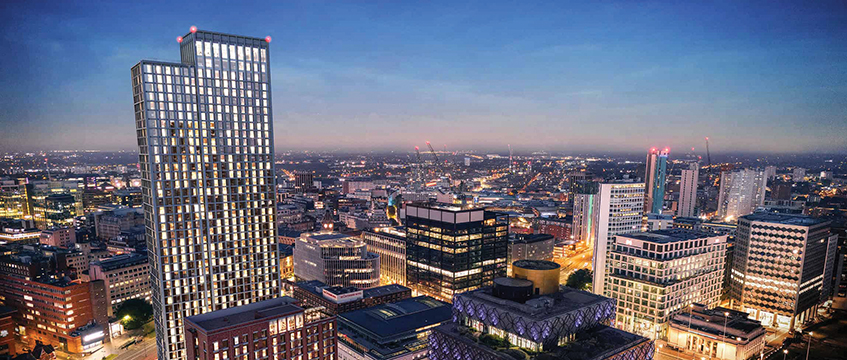The end-vote was conclusive. A sea of green cards at last Thursday’s London Development Conference supported Mayor Ken Livingstone’s vision of the capital’s development. Of the 400 delegates, 395 were in favour.
But when they were asked whether that vision would translate into reality, the seat turned red. Only 10 said yes.
The conference, organised by Estates Gazette and London First, gave representatives from more than 200 businesses, lobby groups and local authorities a chance to pick at the detal of the Mayor’s London Plan before its examination in public begins next month.
Virtually no one, except what I like to call the eco-fundatnentalists, has said that the London Plan is going in the wrong direction,” declared Livingstone. But he was also obliged to refute accusations from delegates that the plan was undeliverable.
“I have become more confident over the past few days than I have been since I was elected. The government is starting to recognise the level of change needed. We do not need a plan B.”
The mayor argued that the South East focus of the government’s Communities Plan, announced last fortnight, and its commitment to support the development of over 100,000 additional homes in the Thames Gateway was a “huge boost” to his vision. “We have been given £5bn for housing in London -which is more than we asked for.”
But others were less optimistic. Tony Travers, director of the Greater London Group at the London School of Economics, claimed that the “complex and fractious” system of government, and interference from “consultative clusters that hang off government like ripe fruit -some of it overripe” would hamper all efforts. “What the mayor can deliver depends heavily on what the government will let him deliver,” he told the conference.
Peter Damesick, head of research at Insignia Richard Ellis, added that the strained relationship between Livingstone and his superiors in central government meant that the mayor was unlikely to get all that he asked for.
“The Draft London Plan is an excellent business plan for London. The problem is the finance director is in another company and he does not necessarily support the plan,” said Damesick.
Speakers argued that there was little sign of sufficient backing for the infrastructure on which the London Plan heavily relies. Crossrail lines I and 2, the East London Line, the increasingly inaccurately named Thameslink 2000, and proposed tramlinks in west London and between Camden and Camberwell are stuck on the drawing boards and have been removed from the Strategic Railway Authority’s short-term projects list.
Delegates, who have grown used to such major transport infrastructure projects failing to materialise, gave vent to their frustrations. As Roy Vandermeer, the former Heathrow terminal 5 planning inspector, who chaired the afternoon panel debate, said: “We have come in hope, if not expectation.”
Professional, p126
The obstructive attitude of planning authorities is a major obstacle to the plan
The London Plan requires a massive increase in the pace of housing starts and office development but can do nothing to speed up the local planning process.
Speakers cited the reactionary stance of many London boroughs as a major obstacle. “Planning authorities are at best indifferent and at worst obstructive. We need to lift the dead hand of planning control,” said Dickon Robinson, a director of Peabody Trust.
According to Robinson, even for companies “on the side of the angels” like Peabody, getting planning for schemes “could be frustrating and a waste of our funds. The nimby voice is amplified by the prescriptive and nit-picking planning officers.”
To almost universal agreement, Robinson added: “Planning authorities can actually be obstructive and simply do not seem to realise that there is a real price to be paid for the slowness of the planning system. Planning has cost us several hundred thousand pounds in delays.” He added: “The planning profession is having a crisis of confidence. The challenge for the planning profession is to review itself.”
Andrew Gould, Jones Lang LaSalle’s international director, said that the planning authorities were inflexible because of their adherence to narrow use-classes, instead of trying to encourage the building of “places”.
Affordable housing quotas could reduce the number of homes built
The London Plan calls for the construction of half a million new homes by 2016, but wants half of them to be available at below market value. The mayor’s housing adviser, Neale Coleman, said: “The purpose of the mayor’s housing policy is to increase the amount of housing”, and claimed that the policy is “more fine-grain than is usually recognised”.
Most speakers argued that the affordable housing quota system was unworkable. Housebuilder St George’s regeneration director, Charmaine Young, said: “If you go down that route, you won’t see any new housing. It will be a disaster.” Chelsfield managing director Nigel Hugill said: “Neale Coleman’s views and mine are diametrically opposed. The GLA and the government won’t accept the idea that by building enough houses you will make it all affordable. The plan’s policy is to make market housing more expensive to pay for the affordable housing. Either it will create a huge gap in the middle of the market or it will restrict the amount of housing built.”
Increasingly, the affordable housing quota system is being regarded as just another tax on development. British Land director Adrian Penfold said that as many as 19 separate demands were made by local authorities – for affordable housing, transport, education and so on – for every application submitted by developers.
Developers fear being forced to shoulder the cost of transport improvements
London’s transport system needs over £30bn of improvements. But with a budget of less than £500m for this, the mayor and Transport for London are not in a position to deliver.
“The government will deliver the goods,” said Livingstone, pointing to Tony Blair’s decision to chair Misc 22, a cabinet sub-committee on infrastructure funding.
But, according to the plan, London will need four new rail and tube lines, three new tramlines, an extended Docklands Light Railway and several extra river crossings. The pace of development would need to be higher than at any time since the Victorian era. “The transport system is at breaking point. I don’t think Misc 22 will come up with the desired result on Crossrail, and without that infrastructure we cannot deliver the density,” said Gerald Kaye, development director at Helical Bar.
Ian Henderson, chief executive of property company Land Securities, said: “I make no apology for going back to the issue of transport. It is hard to see how the London Plan can be delivered without investment in transport infrastructure. The plan will not succeed without the infrastructure. But who will fund it? Will I have to? The balance of risk and return seems skewed. At the moment, my shareholders carry too much of the risk.”
Shifting the focus of development to the east of London and the Thames Gateway
The London Plan’s vision of a new city to the east of London was given a major boost by the government’s Communities Plan, announced a fortnight ago. Livingstone said that the announcement made by deputy prime minister John Prescott, who was not at the conference, was “a huge boost for the policy and approach of the London Plan”. Central government is to provide £446m of seed-corn investment to encourage development in the Thames Gateway.
Of the projected 90m sq ft of commercial development and 500,000 new homes envisaged in the London Plan, over 40% will be built in the east of London and the Thames Gateway. Central government wants at least 100,000 homes built there over the next decade.
Prime minister Tony Blair is taking charge of a cabinet sub-committee, titled Misc22, charged with delivering the infrastructure needed to support the Thames Gateway project. It will make an announcement on funding in May.
Although Livingstone insisted that the prime minister did not chair committees that could not deliver, not all delegates at the conference were convinced that public funding for the Thames Gateway expansion would go much beyond the initial seed-corn funding promised by the Treasury.
Strategy aims to increase capital’s population by 700,000 – and house them
Mayor Ken Livingstone’s 400-page strategy for the capital’s future will be put under the microscope at next month’s public inquiry.
Called the The London Plan: a vision for London’s renaissance, the document envisages the capital in 2016. The population has grown by 700,000, equivalent to absorbing a city the size of Leeds. To provide homes and workplaces for these new residents, the plan proposes to build over 90m sq ft of commercial space and half a million homes, supported by an extended and improved transport network.
Without the transport, none of the proposed development can go ahead. A clause in the London Plan states that development must be phased in line with increased transport capacity, making London’s growth heavily reliant on projects such as Crossrail and Thameslink 2000.
The Greater London Authority estimates that it will cost £27bn to ensure that the transport system is capable of handling the increased population and the new development – but it’s Chancellor Gordon Brown, not Ken Livingstone, who holds the purse-strings.
The government’s announcement may support the ambitions of the London Plan, but it will have to commit to a lot more if the vision is to become a reality.










